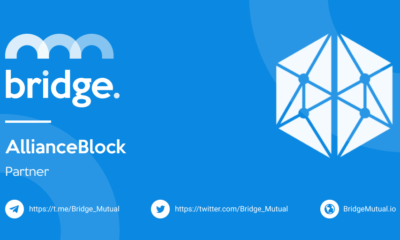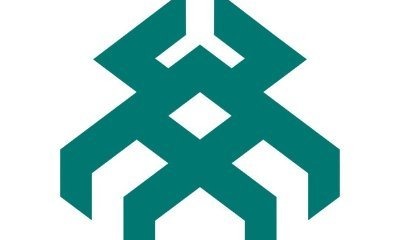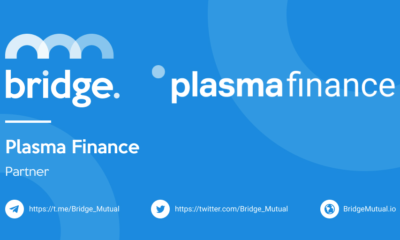Blogs
ARK: a blockchain solution that trades technical fanciness for consumer adoption

It’s great that we have an ever-growing list of blockchain platforms which have real complex, advanced technologies that leap to the eye, allowing marvelous solutions for problems we never thought could be possible in the pre-blockchain internet. Despite all their potential, their tokens are ill-fated, almost in every case, to serve only as assets for investors. Customer involvement is inexistent – and their developers don’t seem as much bothered about it as they are with the compulsion to be the best, flawless technology there is.
And this is, purely market-wise, generally good. One of the elements that determinates coin appreciation is hype – if the coin has an astounding new technology that allows something huge, then people put money on it. And they will keep doing it until they decide it’s not. They all end up the same – used only as a coin to be traded, without any customer adoption in sight and thus without realistic future revenue potential.
On the other side, we have ARK. In opposition to most blockchain applications popping up every day, their priority is customer adoption over technical flashiness (although they do have a team, which they call the ARK Crew, of highly competent scientists), using a customer-oriented solution they developed called SmartBridge. SmartBridge allows the creation multiple individual blockchains with their own rules, which fit in the SmartBrigde as a Lego. They mostly make use of adaptations of technologies already in development, molded for a customer-oriented service.
The bridge also allows full integration with off-chain tools and, since they released their ACE listener service, with environments involving other cryptocurrencies, like Bitcoin and Ethereum. ARK programming, in the current version, uses Lisk (their founders are all ex-liskers), which have been called “the WordPress of blockchains”, as it’s easy to use even for newcomers.
Each blockchain is “bridged” to the MainChain, but they are ultimately individual, as nodes of one chain don’t interconnect with the ones of other chains. They are not “dApps” like in Ethereum, which all run on the same, often overloaded, shared blockchain. If one wishes to develop a dApp using the ARK Virtual Machine, it will run in their own blockchain. However, using the SmartBridge, they can interact and trigger smart contracts with other bridged chains.
So, for example, if a consumer wants to use a service and pay for it in cryptocurrencies, and the service involves the use of multiple blockchains, each for their own purpose (one bridged blockchain to store data, one smart contract in Ethereum to make calculations, and you pay in Bitcoin – and we can go on) that would require 3 transactions with different coin movements. The service provider (or even you the service provider, if they transfer this responsibility to you) would have to deal with ARK for the bridged blockchain, pay GAS for the smart contract and receive (or pay) in Bitcoin. If they are connected into the SmartBridge, you can simply pay with ARK instead.
DPoS
It uses a modified version Delegated Proof of Stake (DpoS) for authentication, a concept introduced by BitShares. It’s a controversial authentication algorithm, which can be seen as both more centralized and decentralized, depending on the light. It’s without a doubt more energy efficient than POW (as every POS are) and previous use cases (like EOS) have shown it’s also faster than both POW and POS. Without digging deeper into this technology, only delegates can produce new blocks (like mining), for which they are paid, and in some cases can decide to change aspects of the network, like transaction fees and block sizes. Users can also “unvote” delegates. Once stakeholders vote for their candidates, they receive back part of a shared pool and benefits (like exemption from transaction fees by the delegate), based on each delegate’s proposal.
This can be viewed as either more or less decentralization in comparison to other authentication methods, in which stakeholders and the community have no direct say on the network parameters, but everyone, not only elected delegates, can generate blocks. It’s considered auto-regulatory if we assume an investor wouldn’t want to impair a network they have put money in, and stakeholders wouldn’t approve changes that don’t benefit them. Each separate blockchain will have its own delegates.
ARK V2, the revamped version, comes with an impressive number of upgrades
ARK was based on Lisk, Crypti, and BitShares with their own adaptations, so you can expect its current features to be pretty much similar to them. But they are just about to launch the ARK V2, which was built from scratch and, thus, is expected to change a lot of things. Among many announced features, a modular plugin manager tool was developed for blockchain services to include available plugins into their networks, and a configuration tool to edit/remove those plugins.
The plugins and blockchain services can be developed in are really easy to setup and use by people with minimal programming knowledge, and they announced that they are focused on creating an even more user-friendly system for deploying blockchains. Upgraded transactions per second, batch payments (send multiple payments using only one compiled transaction, reducing fees) and multisignature options are also expected to be implemented. It’s going to be a whole new phase for ARK, with a lot of features that will unleash their full potential.
However, innovation-wise, these are not exactly astonishing upgrades, but mostly adaptations from other blockchain technologies. This is not a big deal because, as stated before, their goal is to be an easy to use, consumer-oriented solution, nothing like most preposterous blockchain platforms out there. It wouldn’t be unexpected if regular consumer adoption begins not much after the V2 Mainnet launches. They have both desktop and mobile wallets and are supported by Nano S and are listed in all major cryptocurrencies exchanges.
Ark as an investment
Currently, on the 61st position by market cap, ARK is a somewhat little-known blockchain service with a very active community and passionate supporters, if you check their Reddit. It’s not a cult following and it’s not ephemerous hype, but a growing number of people who really believe in ARK’s purpose.
Despite their low-key stance, their potential is high and real. They have been mentioned by Forbes as a “blockchain to keep an eye on”. They are soon to release the V2 version, which will probably result in a spike in their prices. They don’t give dates but considering this can happen anytime, and the fact that their prices are rising again, if one is willing to put money on ARK, it would probably be a better idea to buy it now than later.
For the latest cryptocurrency news, join our Telegram!
Disclaimer: This article should not be taken as, and is not intended to provide, investment advice. Global Coin Report and/or its affiliates, employees, writers, and subcontractors are cryptocurrency investors and from time to time may or may not have holdings in some of the coins or tokens they cover. Please conduct your own thorough research before investing in any cryptocurrency and read our full disclaimer.
Image courtesy of hirotomo t via Flickr
Altcoins
XNO Token of Xeno NFT Hub listed on Bithumb Korea Exchange
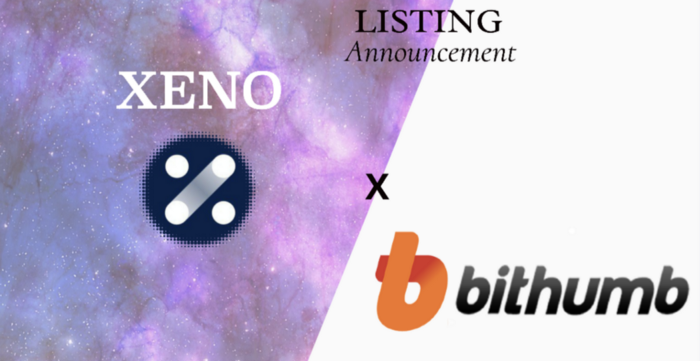
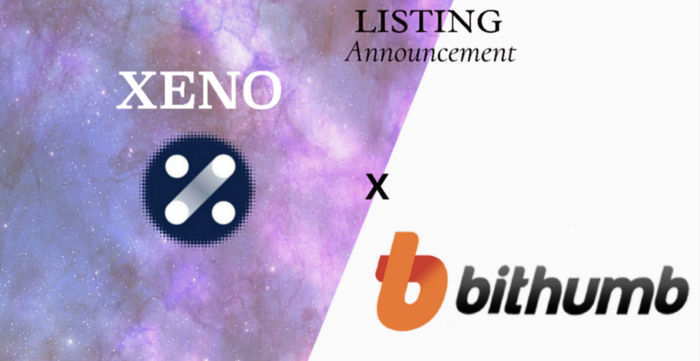
Hong Kong, Hong Kong, 25th January, 2021, // ChainWire //
Xeno Holdings Limited (xno.live ), a blockchain solutions company based in Hong Kong, has announced the listing of its ecosystem utility token XNO on the ‘Bithumb Korea’ cryptocurrency exchange on January 21st 2021.
Xeno NFT Hub (market.xno.live ), developed by Xeno Holdings, enables easy minting of digital items into NFTs while also providing a marketplace where anyone can securely trade NFTs.
The Xeno NFT Hub project team includes former members of the technology project Yosemite X based in San Francisco and professionals such as Gabby Dizon who is a games industry expert and NFT space influencer based in Southeast Asia.
NFT(Non-Fungible Token) technology has recently gained huge focus in the blockchain arena and beyond, making waves in the online gaming sector, the art world, and the digital copyrights industry in recent years. The strongest feature of NFTs is that “NFTs are unique digital assets that cannot be replaced or forged”. Unlike fungible tokens such as Bitcoin or Ether, NFTs are not interchangeable for other tokens of the same type but instead each NFT has a unique value and specific information that cannot be replaced. This fact makes NFTs the perfect solution to record and prove ownership of digital and real-world items like works of art, game items, limited-edition collectibles, and more. One of the ways to have a successful…
Altcoins
Should Crypto Projects Devote Resources to Community Growth and Marketing?

2020 has been an incredible year for crypto as investors have generated windfall profits and crypto projects have seen their businesses gain the spotlight they’ve been looking for. While Bitcoin has received most of the attention after major institutional investors announced they were accumulating the increasingly scarce asset, many altcoins have also seen their fair share of glory. When looking at all the big winners of the past year, the first project that probably comes to mind is Chainlink, having appreciated by more than 550% YTD and now valued at over $4.5 billion. But, the actual biggest winner of the year is HEX with a YTD return of over 5,000%.
I mention both of the above projects as they have each taken slightly different paths to achieve greatness. Chainlink has devoted resources toward building a fundamentally sound business with many strategic partnerships while HEX has spent vast sums of money on marketing and promotion. Both approaches are valid, but one thing is certain, it is absolutely imperative for crypto projects to let the crypto community know what makes them special. Of course, one of the reasons that makes crypto so valuable is the powerful blockchain technology that most projects are utilizing.
Cryptocurrency vs. Blockchain Technology
It’s important to make a distinction between blockchain technology and cryptocurrency. Although they are often used interchangeably, they are different. Blockchain technology and crypto were both created after the 2008 financial crisis, but cryptocurrency…
Altcoins
XENO starts VIP NFT trading service and collaborates with contemporary artist Hiro Yamagata


Hong Kong, Hong Kong, 24th December, 2020, // ChainWire //
The XENO NFT Hub (https://xno.live) will provide a crypto-powered digital items and collectables trading platform allowing users to create, buy, and sell NFTs. Additionally it will support auction based listings, governance and voting mechanisms, trade history tracking, user rating and other advanced features.
As a first step towards its fully comprehensive service, XENO NFT Hub launched a recent VIP service to select users and early adopters in December 2020 with plans for a full Public Beta to open in June 2021.
“NFTs are extremely flexible in their usage, from digital event tickets to artwork, and while NFTs have a very wide spectrum of uses and categories XENO will initially focus its partnership efforts and its own item curation on three primary areas: gaming, sports & entertainment, and collectibles.”, said XENO NFT Hub president Anthony Di Franco.
He also added “This does not mean we will prohibit other types of NFTs from our ecosystem However, it simply means that XENO’s efforts as a company will be targeted into these verticals initially as a cohesive business approach.”
Development and Procurement Lead, Gabby Dizon explained, “Despite our initial focus, we found ourselves with a unique opportunity to host some of the works of Mr. Hiro Yamagata. We are collaborating with Japanese artist Hiro Yamagata to enshrine some of his artwork into NFTs.”
Mr. Yamagata has…
-

 Blogs6 years ago
Blogs6 years agoBitcoin Cash (BCH) and Ripple (XRP) Headed to Expansion with Revolut
-

 Blogs6 years ago
Blogs6 years agoAnother Bank Joins Ripple! The first ever bank in Oman to be a part of RippleNet
-

 Blogs6 years ago
Blogs6 years agoStandard Chartered Plans on Extending the Use of Ripple (XRP) Network
-

 Blogs6 years ago
Blogs6 years agoElectroneum (ETN) New Mining App Set For Mass Adoption
-

 Don't Miss6 years ago
Don't Miss6 years agoRipple’s five new partnerships are mouthwatering
-

 Blogs6 years ago
Blogs6 years agoEthereum Classic (ETC) Is Aiming To Align With Ethereum (ETH)
-

 Blogs6 years ago
Blogs6 years agoCryptocurrency is paving new avenues for content creators to explore
-

 Blogs6 years ago
Blogs6 years agoLitecoin (LTC) Becomes Compatible with Blocknet while Getting Listed on Gemini Exchange

